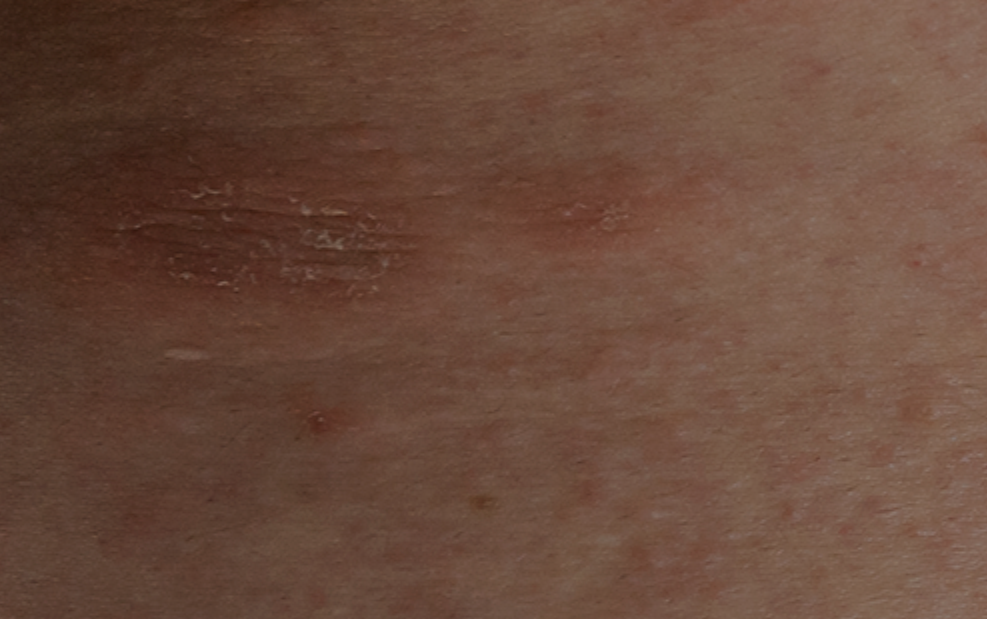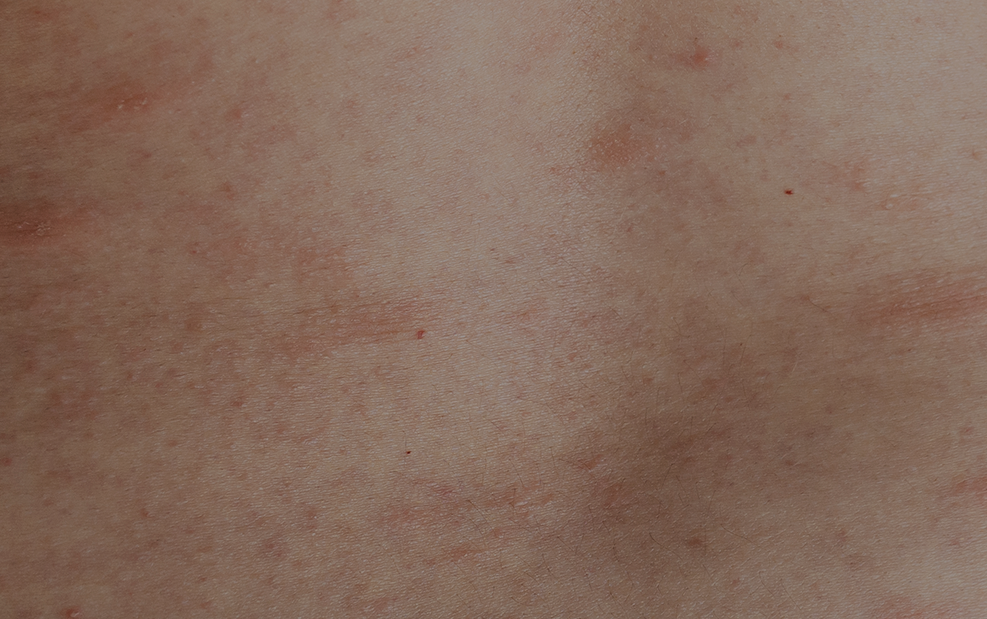|
How should urticaria be classified?
|
| We recommend that urticaria is classified based on its duration as acute (<= 6 weeks) or chronic (> 6 weeks). |
↑ ↑
|
Strong consensus*
Expert consensus
|
| We recommend that urticaria is classified as spontaneous (no definite eliciting factor involved) or inducible (specific definite factor involved). |
↑ ↑
|
Strong consensus*
Expert consensus
|
|
Should we maintain the current guideline classification of chronic urticaria?
|
| We recommend that the current guideline classification of chronic urticaria should be maintained. |
↑ ↑
|
Strong consensus*
Expert consensus
|
|
Should routine diagnostic measures be performed in acute urticaria?
|
| We recommend against any routine diagnostic measures in acute spontaneous urticaria. |
↓ ↓
|
Strong consensus*
Expert consensus
|
|
Should differential diagnoses be considered in patients with chronic spontaneous urticaria?
|
| We recommend that differential diagnoses be considered in all patients with signs or symptoms suggestive of chronic urticaria based on the guideline algorithm. |
↑ ↑
|
Strong consensus*
Expert consensus |
|
What routine diagnostic measures should be performed in chronic spontaneous urticaria?
|
| We recommend limited investigations. Basic tests include differential blood count, CRP and/or ESR, and in specialized care total IgE and IgG anti-TPO, and more biomarkers as appropriate.
We recommend performing further diagnostic measures based on the patient history and examination, especially in patients with long standing and/or uncontrolled disease. |
↑ ↑
|
Consensus**
Expert consensus
|
|
Should routine diagnostic measures be performed in inducible urticaria?
|
| We recommend using provocation testing to diagnose chronic inducible urticaria.
We recommend using provocation threshold measurements and the UCT to measure disease activity and control in patients with chronic inducible urticaria, respectively. |
↑ ↑
|
Strong consensus*
Expert consensus
|
|
Should patients with chronic urticaria be assessed for disease activity, impact, and control?
|
| We recommend that patients with CU be assessed for disease activity, impact, and control at every visit. |
↑ ↑
|
Strong consensus*
Expert consensus
|
|
Which instruments should be used to assess and monitor disease activity in chronic spontaneous urticaria patients?
|
| We recommend the use of the urticaria activity score, UAS7, and/or of the angioedema activity score, AAS, for assessing disease activity in patients with chronic spontaneous urticaria. |
↑ ↑
|
Strong consensus*
Expert consensus
|
|
Which instruments should be used to assess and monitor quality of life impairment in chronic spontaneous urticaria patients?
|
| We recommend the use of the chronic urticaria quality of life questionnaire, CU-Q2oL, and the angioedema quality of life questionnaire, AE-QoL, for assessing quality of life impairment in patients with chronic spontaneous urticaria. |
↑ ↑
|
Strong consensus*
Expert consensus
|
|
Which instruments should be used to assess and monitor disease control in chronic spontaneous urticaria patients?
|
| We recommend the use of the urticaria control test, UCT, and/or the angioedema control test, AECT, for assessing disease control in patients with CSU. |
↑ ↑
|
Strong consensus*
Expert consensus
|
|
Should treatment aim at complete symptom control in urticaria?
|
| We recommend aiming at complete symptom control in urticaria, considering as much as possible the safety and the quality of life of each individual patient. |
↑ ↑
|
Strong consensus*
Expert consensus
|
|
Should patients with chronic spontaneous urticaria be advised to discontinue medication that is suspected to worsen the disease?
|
| We recommend advising patients with chronic spontaneous urticaria to discontinue medication that is suspected to worsen the disease, e.g. NSAIDs. |
↑ ↑
|
Strong consensus*
Expert consensus
|
|
Should modern 2nd generation H1-antihistamines be used as first-line treatment of urticaria?
|
| We recommend a 2nd generation H1-antihistamine as first-line treatment for all types of urticaria. |
↑ ↑
|
Strong consensus*
Evidence and consensus-based
|
|
Is an increase in the dose to up to four-fold of modern 2nd generation H1-antihistamines useful and to be preferred over other treatments in urticaria?
|
| We recommend updosing of a 2nd generation H1-antihistamine up to 4-fold in patients with chronic urticaria unresponsive to a standard-dosed 2nd generation H1-antihistamines as second line treatment before other treatments are considered. |
↑ ↑
|
Strong consensus*
Evidence and consensus-based
|
|
Should modern 2nd generation H1-antihistamines be taken regularly or as needed?
|
| We suggest 2nd generation H1-antihistamines to be taken regularly for the treatment of patients with chronic urticaria. |
↑
|
Strong consensus*
Evidence and consensus-based
|
|
Should different 2nd generation H1-antihistamines be used at the same time?
|
| We suggest against using different H1-antihistamines at the same time. |
↓
|
Consensus***
Evidence and consensus-based
|
|
If there is no improvement, should higher than fourfold doses of 2nd generation H1-antihistamines be used?
|
| We recommend against using higher than 4-fold standard dosed H1-antihistamines in chronic urticaria |
↓ ↓
|
Strong consensus*
Evidence and consensus-based
|
|
Is omalizumab useful as add-on treatment in patients unresponsive to high doses of H1-antihistamines?
|
| We recommend adding on omalizumab* for the treatment of patients with CU unresponsive to high dose 2nd generation H1-antihistamines.
*currently licensed for chronic spontaneous urticaria |
↑ ↑
|
Strong consensus*
Evidence and consensus-based
|
|
Is ciclosporin useful as add-on treatment in patients unresponsive to high doses of H1-antihistamine?
|
| We suggest using ciclosporin for the treatment of patients with CU unresponsive to high dose of 2nd generation H1-antihistamine and omalizumab. |
↑
|
Strong consensus*
Evidence and consensus-based
|
|
Should oral corticosteroids be used as add-on treatment in the treatment of urticaria?
|
| We recommend against the long-term use of systemic glucocorticosteroids in CU. |
↓ ↓
|
Strong consensus*
Evidence and consensus-based
|
| We suggest considering a short course of rescue systemic glucocorticosteroids in patients with an acute exacerbation of CU. |
↑
|
Strong consensus*
Evidence and consensus-based
|
|
Are H2-antihistamines useful as add-on treatment in patients unresponsive to low or high doses of H1-antihistamines?
|
| We cannot make a recommendation for or against the combined use of H1- and H2-antihistamines in patients with chronic urticaria. |
0
|
Strong consensus*
Expert consensus
|
|
Could any other treatment options be recommended for the treatment of urticaria?
|
| We cannot make a recommendation with respect to further treatment options as standard therapies, but these may be considered in special cases, which also include those where financial or legal limitations for the recommended algorithm treatment exist. |
0
|
Strong consensus*
Expert consensus
|
| Should the same treatment algorithm be used in children? |
| We suggest using the same treatment algorithm with caution (e.g. weight adjusted dosage) in children with chronic urticaria |
↑
|
Strong consensus*
Expert consensus
|
| Should the same treatment algorithm be used in pregnant women and during lactation? |
| We suggest using the same treatment algorithm with caution both in pregnant and lactating women after risk-benefit assessment. Drugs contraindicated or not suitable in pregnancy should not be used |
↑
|
Strong consensus*
Expert consensus
|


















